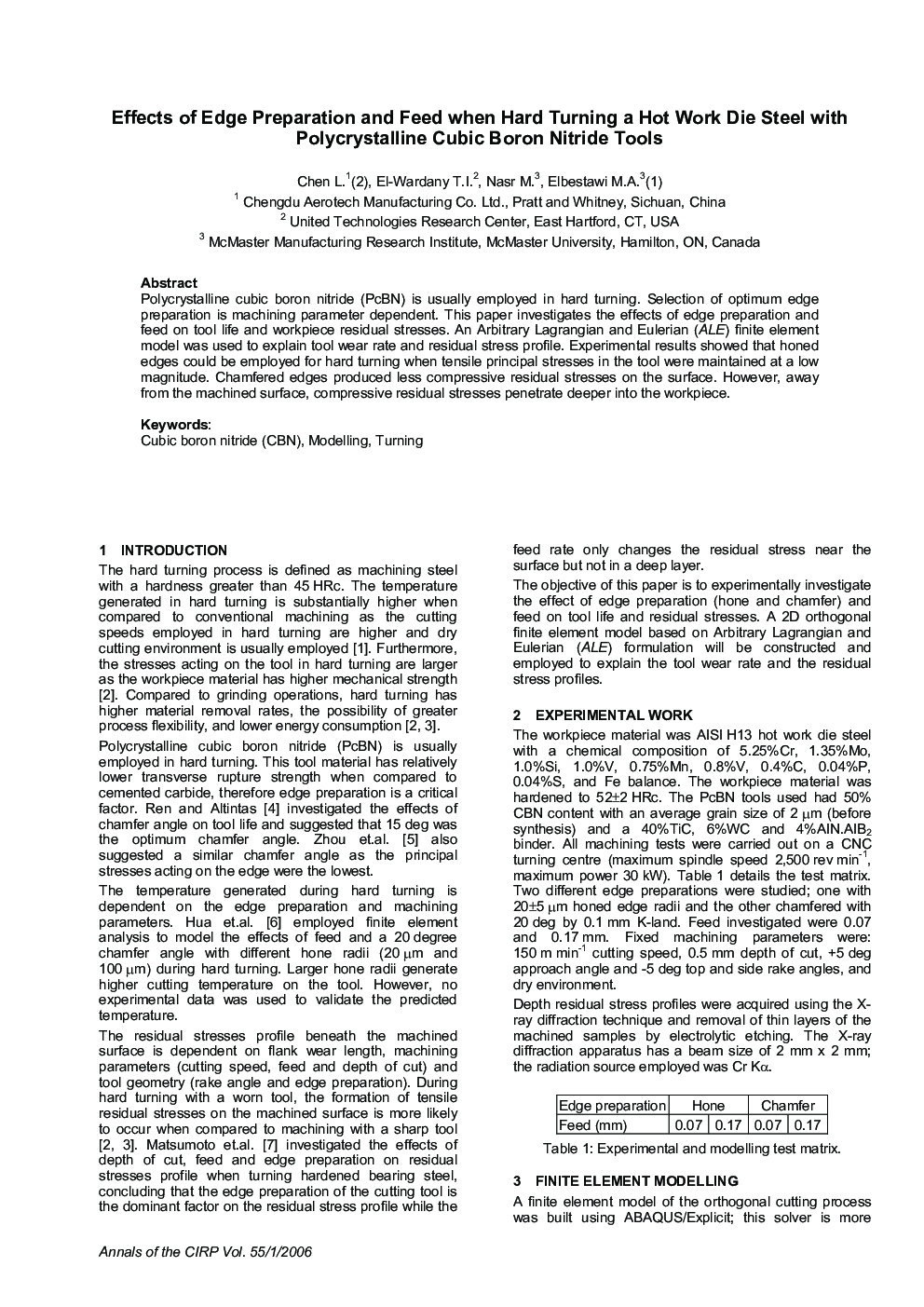| Article ID | Journal | Published Year | Pages | File Type |
|---|---|---|---|---|
| 1679581 | CIRP Annals - Manufacturing Technology | 2006 | 4 Pages |
Abstract
Polycrystalline cubic boron nitride (PcBN) is usually employed in hard turning. Selection of optimum edge preparation is machining parameter dependent. This paper investigates the effects of edge preparation and feed on tool life and workpiece residual stresses. An Arbitrary Lagrangian and Eulerian (ALE) finite element model was used to explain tool wear rate and residual stress profile. Experimental results showed that honed edges could be employed for hard turning when tensile principal stresses in the tool were maintained at a low magnitude. Chamfered edges produced less compressive residual stresses on the surface. However, away from the machined surface, compressive residual stresses penetrate deeper into the workpiece.
Related Topics
Physical Sciences and Engineering
Engineering
Industrial and Manufacturing Engineering
